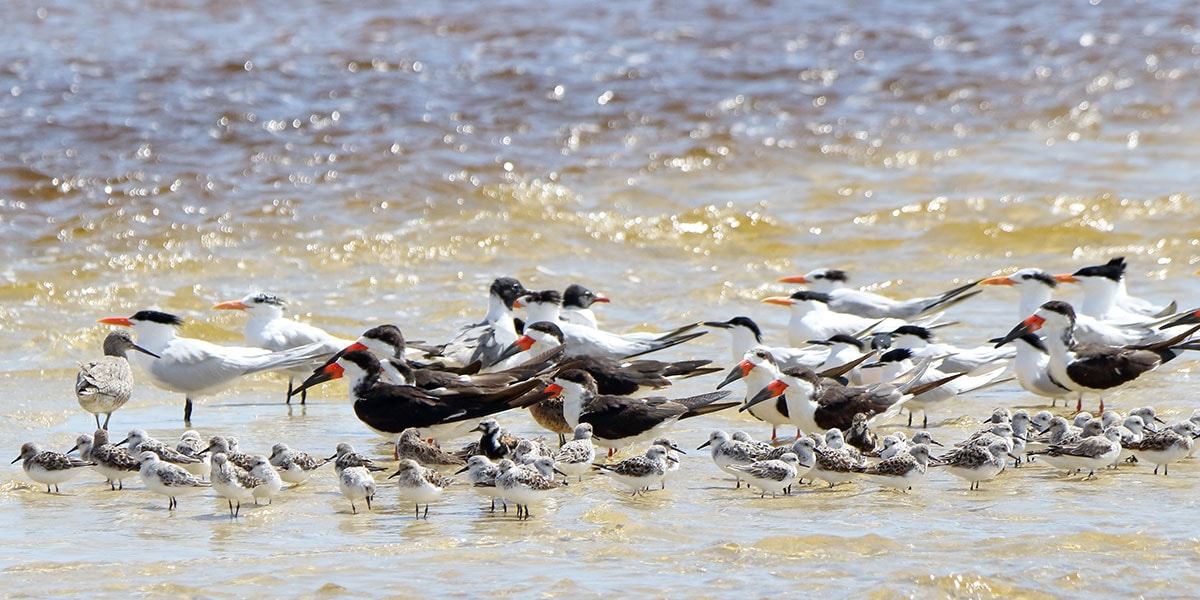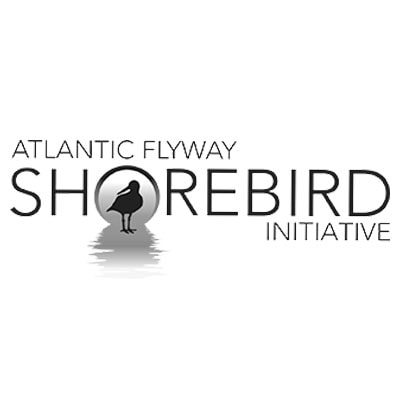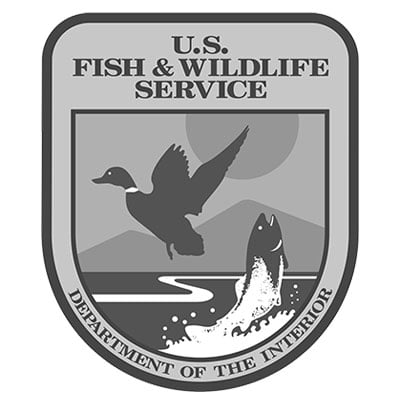Bird-friendly Dog Walking
Know the rules at your local beach before taking your dog to the shore
While your dog may enjoy getting exercise and socialization on the beach, it is important to remember that even good dogs can frighten beach birds. While sharing the shore, it’s important to give birds space and keep them safe.
What is Dog Disturbance?
Even good dogs and responsible people can frighten beach birds.
According to experts, human disturbance is the greatest threat to shorebirds. When the normal behaviors and activities of a bird are altered by something, such as people or dogs, this is referred to as disturbance. Common disturbances to shorebirds include people and their dogs walking through flocks, chasing after birds, or even just getting close enough to scare off the birds.
Your dog may typically respond well to commands, but shorebirds can be very interesting to dogs. When dogs get curious and get a little too close to birds, unfortunately, the birds are not able to tell the difference between a pet and a threat. When a dog approaches a nesting site, they may frighten parents from their eggs and chicks. This can leave the young vulnerable to deadly temperatures, being eaten by seagulls, crows, or foxes, or even getting crushed underfoot.
To help protect shorebirds, you may be asked to keep your dog on a leash at some beaches, or you may be asked to walk your dog somewhere else at others. Thank you for being a responsible dog owner and checking the rules at your local beach before enjoying the sun and fun.
Learn more about site-specific efforts to help shorebirds at:
Higgins Beach (ME) | Lido Beach (NY) | Sunken Meadow State Park (NY) | Harbor Island (SC) | St. Simons Island (GA)
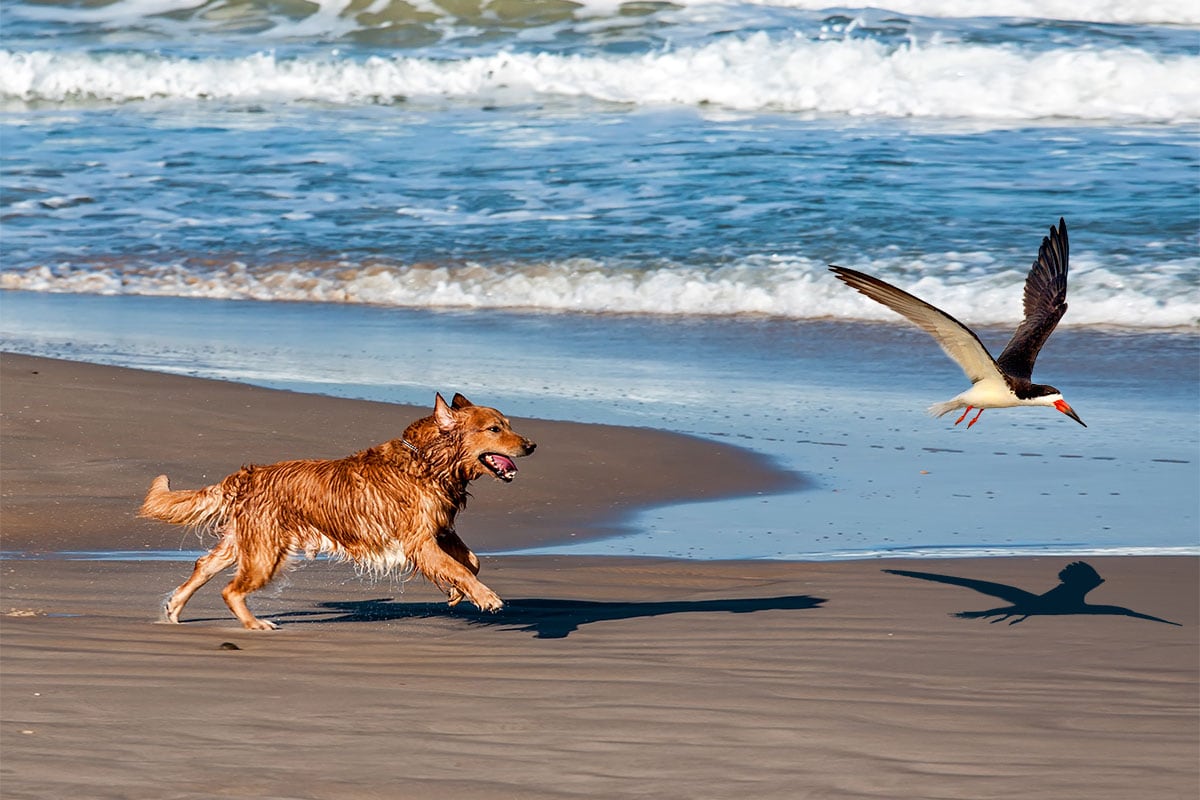
What Does Disturbance Look Like?
Activities that seem harmless, like walking dogs on the beach or chasing birds, can actually cause a lot of distress to shorebirds. Next time you are at the beach, watch out for these signs that a bird is disturbed:
- Did the bird fly away when you approached it?
- Did the bird stop feeding and start walking away or look at you on alert?
- Did the bird call out or act like it was injured to draw you away from its young?
If you noticed any of these bird behaviors, then you and your dog are probably too close. Try rounding your path to walk farther around the flock or the individual bird.
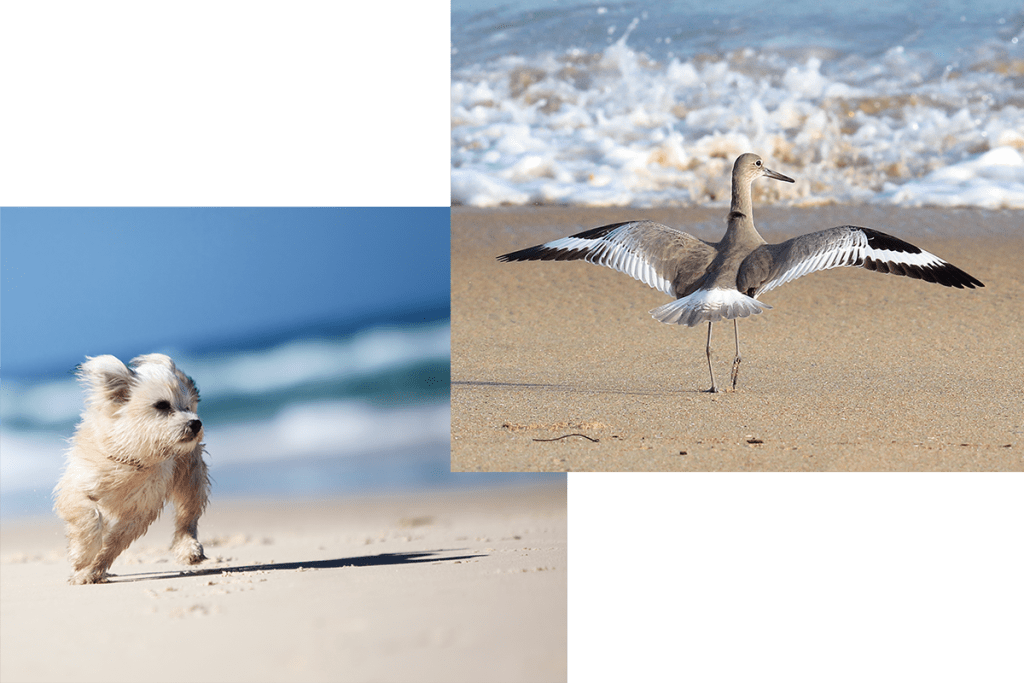
Local Sites Can Make A Big Difference
Want to learn more about how you can help protect shorebirds? Find the beach you visited on the map or the list below to get started.
Sites: Lido Beach (NY), Harbor Island and St. Simons Island
Home Sweet Home
Reducing dog disturbance of shorebirds
Shorebirds face many threats, including habitat loss, predation, climate change, and human disturbance, that prevent them from tending to their young and getting the food they need to survive.
About The Birds
Shorebirds are small to medium size birds often characterized by long legs and probing bills. They are amazing migrants, often making trips across multiple continents and over open ocean to get to the beach you are at today.
Every year, shorebirds from across the Western Hemisphere migrate to and breed at different sites along the East Coast of the United States. Depending on the species and where and when you are on the Atlantic Coast, shorebirds may be breeding and building their nests, recharging and refueling from their long distance travels, or spending their winter there.
Learn more about the birds you share the shore with and how to identify them.
